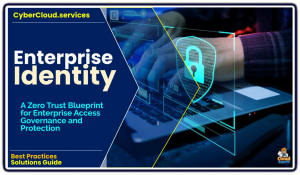 Social engineering is the psychological manipulation of people into performing actions or divulging confidential information.
Social engineering is the psychological manipulation of people into performing actions or divulging confidential information.
In cybercrime, these “human hacking” scams tend to lure unsuspecting users into exposing data, spreading malware infections, or giving access to restricted systems.
Social engineering is a manipulation technique that exploits human psychology to gain unauthorized access to systems, data, or sensitive information.
Instead of relying on technical vulnerabilities, attackers use deception to trick individuals into revealing confidential details, such as passwords or account credentials, or performing actions that compromise security, like clicking malicious links or granting access to restricted areas.
Common methods include phishing emails that mimic trusted sources, pretexting where attackers impersonate authority figures, or baiting with enticing offers to lure victims. Social engineering succeeds by exploiting trust, fear, curiosity, or lack of awareness, making it a powerful tool for cybercriminals targeting both individuals and organizations.
Enterprise Identity
Enterprise identity solutions counter these threats by implementing strong authentication and access controls. For instance, multi-factor authentication (MFA) ensures that even if credentials are stolen through phishing, additional verification steps block unauthorized access.
Role-based access control (RBAC) limits what attackers can do with compromised accounts, while zero trust architecture continuously verifies users, thwarting impersonation attempts. By combining these technical defenses with user education on recognizing manipulation tactics, enterprise identity systems significantly reduce the risk of social engineering attacks.
Enterprise identity solutions provide robust protection against social engineering by implementing sophisticated authentication and access control mechanisms that mitigate the risks posed by human vulnerabilities. One key feature is multi-factor authentication (MFA), which requires users to verify their identity through multiple methods, such as a password combined with biometrics or a device-based token.
This significantly reduces the likelihood of unauthorized access, even if an attacker successfully tricks a user into revealing their credentials through tactics like phishing or pretexting. By adding these additional layers of verification, enterprise identity systems ensure that stolen credentials alone are insufficient for gaining entry.
Best Practices
Another critical component is single sign-on (SSO), which centralizes access management, allowing users to authenticate once to access multiple applications. This streamlines the login process and reduces password fatigue, a common vulnerability that social engineers exploit through phishing emails promising “account updates” or similar ruses. By minimizing the need for multiple passwords, SSO lowers the chances of users inadvertently compromising their accounts.
Additionally, role-based access control (RBAC) further strengthens security by limiting access to resources based on a user’s specific role within the organization. Even if an attacker manipulates a user into granting access, RBAC ensures that sensitive systems or data outside the user’s authorized scope remain protected.
Enterprise identity systems also incorporate zero trust architecture, which operates on the principle of continuous verification for every user and device, regardless of their perceived trust level. This approach effectively counters social engineering tactics like impersonation, as access requires real-time validation beyond merely stolen credentials.
Furthermore, user behavior monitoring plays a vital role by detecting anomalies, such as unusual login locations or times, which could indicate a compromise resulting from social engineering attacks like account takeover. Centralized identity management complements these measures by enabling administrators to swiftly deactivate compromised accounts or adjust permissions, thereby limiting potential damage if an employee is deceived into sharing access.
Featured Vendor: HYPR
HYPR Affirm is a cutting-edge service offered as part of HYPR’s comprehensive Identity Assurance platform. This service plays a crucial role in enhancing security measures and improving the overall user experience.
Key capabilities include Multi-Factor and Biometric Authentication, device-level security ensuring that only trusted devices can interact with the Identity Assurance platform, and Behavioral Biometrics: HYPR Affirm goes beyond traditional authentication methods by analyzing user behavior patterns to detect anomalies and prevent unauthorized access.
In this webinar Bojan Simic, CEO and Ryan Rowcliffe, Field CTO, demonstrate HYPR Affirm, discuss the underlying implementation, and talk about what’s necessary to prevent helpdesk social engineering.



